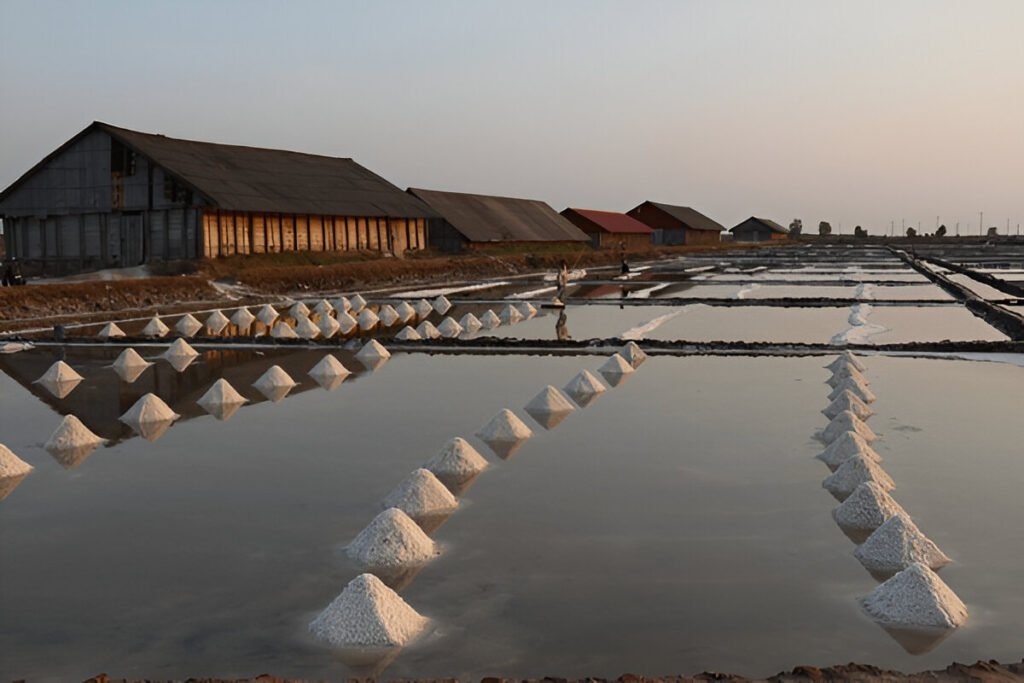Introduction:
Nestled on the outskirts of Shanghai, China is a historical gem awaiting your exploration. The Fengjing Ancient Town, boasting a history of more than 1,500 years, is a living testament to the grandeur of ancient Chinese architecture and culture. As a well-preserved ancient water town, Fengjing is a must-see destination for any traveler with a thirst for history, culture and traditional architecture. Its rich scenic beauty and charming ancient streets whisper tales from the Ming (1368-1644) and Qing (1644-1911) dynasties, offering an immersive experience into the Chinese past.
Unveiling the Mysteries of Fengjing Ancient Town: A Journey Back in Time
Fengjing Ancient Town is no mere tourist attraction; it’s a portal into another time. As you walk along its labyrinth of cobblestone streets, you’ll be surrounded by whitewashed houses with black-tiled roofs that curve in a traditional Chinese style. The well-preserved architecture, with their intricate wooden carvings and red lanterns, breathes life into the town’s ancient soul. The crisscrossing canals, adorned with weeping willows, add to the town’s charm, making it a picturesque setting for a trip down memory lane.
Delving deeper into the heart of Fengjing, you’ll discover that it’s not just the architecture that has stood the test of time. The town is a vibrant hub of traditional culture and art. Here, Chinese folk art forms such as Jinshan peasant paintings and Zhonghua dough modelling thrive and are passed down generations. The town’s residents, too, embody the spirit of ancient China, with their simple, rustic lifestyles.
As you wander through the town, each turn reveals a new surprise. You may find yourself in front of the Zhihe Bridge, a stone arch bridge dating back to the Yuan Dynasty. Or, you may stumble upon the Ding’s Grand House, a majestic residence that showcases the prosperity of the Ming and Qing eras.
Admiring the Grandeur of Ming and Qing Era Architecture in Fengjing
Fengjing is a treasure-trove of Ming and Qing architecture. Unlike many ancient towns that have succumbed to modernity, Fengjing has staunchly preserved its architectural heritage. The town is divided into two parts by a canal: the northern part houses Ming-era buildings, while the southern area is home to architecture from the Qing Dynasty.
In the northern part, the most striking architectural marvel is the ancient Zuolin Street. Flanked by imposing Ming buildings on both sides, the street echoes with the footsteps of time. On the other hand, the southern part of the town tells tales from the Qing era. Here, the architectures are grander and more ornate, reflecting the prosperity of the period. The Twin Bridges, also known as the Shuangqiao, is a prime example of the grandeur of Qing era architecture.
The Ding’s Grand House, built during the Qing Dynasty, is yet another architectural masterpiece. This opulent residence, with its exquisite carvings and intricate details, provides a peek into the lives of the wealthy during the Qing era. The Fengjing Grand Theatre, an important cultural relic, is also a must-visit for architecture enthusiasts.
Local Tips:
The best time to visit Fengjing Ancient Town is during spring and autumn when the weather is pleasant. It’s advisable to wear comfortable footwear as you will be walking on cobblestone streets. Don’t forget to bring a camera to capture the ethereal beauty of the town and its architectural wonders.
How to Get There:
Fengjing Ancient Town is about 60 kilometers from central Shanghai. You can reach there by car, which takes approximately an hour. Alternatively, you can take a bus from Shanghai South Railway Station, which takes about 90 minutes.
Nearby Attractions:
If you have extra time on your hands, consider visiting the Jinshan City Beach or the Shanghai Film Park, which are in close proximity to the ancient town.
Conclusion:
Fengjing Ancient Town is more than just a testament to China’s architectural brilliance. It’s a living, breathing time capsule that transports you back to the Ming and Qing eras. Its serene beauty, ancient charm, and rich cultural heritage make it a must-visit destination. So, pack your bags and set forth to experience this mesmerizing journey into China’s glorious past.






